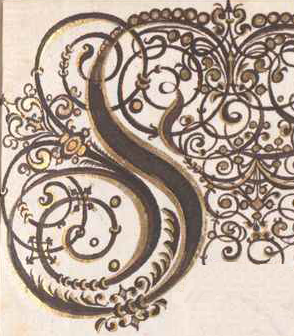Programme Notes An Wasserflüssen Babylon
 The following post accompanies our concert “An Wasserflüssen Babylon”. Our idea is that you read it after the concert, as we hope during it, you will listen to and watch us.
The following post accompanies our concert “An Wasserflüssen Babylon”. Our idea is that you read it after the concert, as we hope during it, you will listen to and watch us.
In these programme notes we will delve into our reasons for improvising on only one chorale, give some background information on the chorale and Bach’s relationship to it, write a little about our process and finally give some other historical versions of this piece for you to listen to.
Why improvise an entire concert on one chorale?
The idea for this concert arrived from two sides. On the one hand, we realised we are always improvising short pieces, often accompanied by a nice story. As a consequence the danger of loosing the audience’s attention was small: there was always something new. We were looking to challenge ourselves in this area, but how exactly?
On the other hand we happened to talk about the story of Johann Sebastian Bach improvising for three hours in Hamburg in relation to the chorale An Wasserflüssen Babylon, which we in turn had discussed because of this year’s celebrations around Luther’s reformation, exemplified by the Festival Oude Muziek Utrecht’s choice for Reformation as its festival’s theme.
According to his obituary, Bach improvised for three hours, including a half hour on the chorale we have taken as our subject for this programme. Bach’s visit to Hamburg was instigated by the wish to meet Johann Adam Reincken, who also wrote a 20-minute version of the piece. We then realised, that also Bach’s Goldberg variations (another favourite of ours) were a long ‘improvisation’ on just 16 bars. So there is historical precedence for improvising for a long amount of time on just one piece and An Wasserflüssen Babylon seemed just the right fit for our challenge: instead of improvising many short pieces, reduce the material to just one piece and try to bring to the fore all its rich hidden musical resources to the listener.
We look forward to hearing from you whether we managed in improvising an interesting concert with just one chorale as our point of departure.
The chorale An Wasserflüssen Babylon
The text of this chorale is a translation of Psalm 137, a lament on the exile in Babylon of the Jews. The melody and text were written by organist Wolfgang Dachstein in 1525 in Straßburg. The melody and text then spread and are found for example in a 1531 Nürnberg songbook. In 1545 Martin Luther incorporates it in his Babstsches Gesangbuch. After this it can be found in nearly all subsequent German song books. In 1544 Georg Rhau (an earlier Thomas Kantor!) wrote two new versions and several others followed suit.
In an early copy we can see why this text resonated with the early Lutherans: they felt it related to their fight for the ‘true church’.
Ein Klag und Gelübdpsalm über die Unterdrückung des wahren Gottesdienstes von den gottlosen Tyrannen und ernste Begierde, den wahren Gottesdienst wieder anzurichten. (from Eduard Emil Koch’s Geschichte des Kirchenlieds….)
Johann Sebastian Bach’s Hamburg visit and improvisation
We can read about this visit in Bach’s Nekrolog, his obituary, which was written in 1750 by his son Carl Philipp Emmanuel, Lorenz Christoph Mizler de Kolof and son-in-law / student Johann Friedrich Agricola. Here is the episode in translation:
During this time, it was approximately in the year 1722, he made a trip to Hamburg and made himself heard in front of the municipal authorities and many other noble residents of the city on the beautiful organ of St. Cathryn’s Church, for a general amazement, more than two hours. The old organist in this church, Johann Adam Reinken, who was almost one hundred years of age back-then, listened to him with a special pleasure and made him, in particular about the choral “An Wasserfluesen Babylon” a compliment. Our Bach played this piece ad hoc and very spacious for half an hour in different versions, like anciently the honest among the Hamburg organists in the Saturday services were used to do. The compliment was the following: I thought, this art has died out. However I see now, that it is still living in you. This statement of Reinken was even more unexpected, as he, many years ago, set this choral himself, in the mentioned method above. which was not unknown to our Bach. After that Reinken obligated Bach to come see him and paid him much cordiality.
Bach and Reincken’s use of the chorale
Improvising on An Wasserflüssen Babylon
Since we had never improvised on one piece for this long before, we decided to start by practising different approaches to the chorale. Once we had practised separate elements, the next adventure was how to put those together in one piece.
Firstly, there is of course a division in instrumentation. We could choose to play different solos, duos or as a trio.
Then we had to research and experiment with different approaches to the chorale.
We could play the whole chorale and improvise variations on top of it, like a ‘chorale partita’. The chorale can be in the melody instruments, or in the bass, which both have different consequences for which notes are allowed to be played by the others.
Or we could do a ‘chorale fantasia’, in which the chorale is interrupted by little flurries of fun with motives from the original melody.
There was also the possibility of using the bass that Roberto was playing in the cello without the chorale melody but with one or two newly invented melodies, in effect a big departure from the original in terms of being able to recognise it.
We could also isolate a small part of the chorale (melody and bass) and repeat it with ever changing variations. Or, we could take this small part of the chorale and use it as a motive, musicking together a mosaic block to make a larger piece consisting out of the small motives, a sort of fantasia on a motive.
Related to this is the Invention style, which James and Robert learned in their programme Inventions. In this case we can use part of the chorale as a theme to weave a new piece, exchanging ideas in a kind of interlocked conversational style using the same motive in kaleidoscope-like fashion.
Practising any of these approaches separately was actually quite easy. But now the real adventure was about to start: how would we know which approach we started? For example, the chorale partita and fantasia idea start quite possibly in the same way. Is a duo or solo just an introduction? Are we repeating a certain section or continuing.
This brought us to the next question, a question we will have to answer in each performance of this piece. What do we do when we are not certain that we are doing the same thing, or even, certain that we are not (we could call this ‘a mistake’).
We first met this inevitable clash of ideas shyly, but then realised, that sometimes the most exciting moments and changes in sound colour were in fact the ‘mistakes’. So long as we can incorporate them in our narrative, use them for what they are, we could improvise on this one piece endlessly.
It will also be interesting to see what you as the audience think: will you hear it when ‘a mistake’ occurs, will you mind? We can’t wait to hear all about it from you!
Did you enjoy our concert and programme notes?
As musicians in this time, we can use all the help we can get!
Support us by liking us or giving us a review on Facebook, joining our mailing list (see top right), giving us a review on our website, contacting us to find out about sponsoring or sharing any of this with your friends in real life or online.
Other versions of An Wasserflüssen Babylon
Georg Rhau (1544) – Neue Deutsche Geistliche Gesänge für die gemeinen Schulen
Sigmund Hemmel (1569) (melody in the tenor)
Franz Tunder
Samuel Scheidt
Johann Schein
Nicolai Otto – An Wasserflüssen Babylons ((after Ps cxxxvi))
Benedictus Ducis – An WasserflüssenBabylon, 3vv, 1541², 1559², 1560¹; An Wasserflüssen Babylon, 1544 (4 voices)
Johann Christoph Bach (1642-1703) – An Wasserflüssen Babylon (organ chorale)
Johann Pachelbel – An Wasserflüssen Babylon (organ)
Hans Leo Hassler – An Wasserflüssen Babylon (4 voices)
Heinrich Schütz – An Wasserflüssen Babylon (4 voices)
Lupus Hellinck – 4 voices
Sigmund Hemmel – 4 voices
With a new text it is still sung as “Ein Lämmlein geht und trägt die Schuld”
Playlist with some of the versions which can be found on Youtube:
